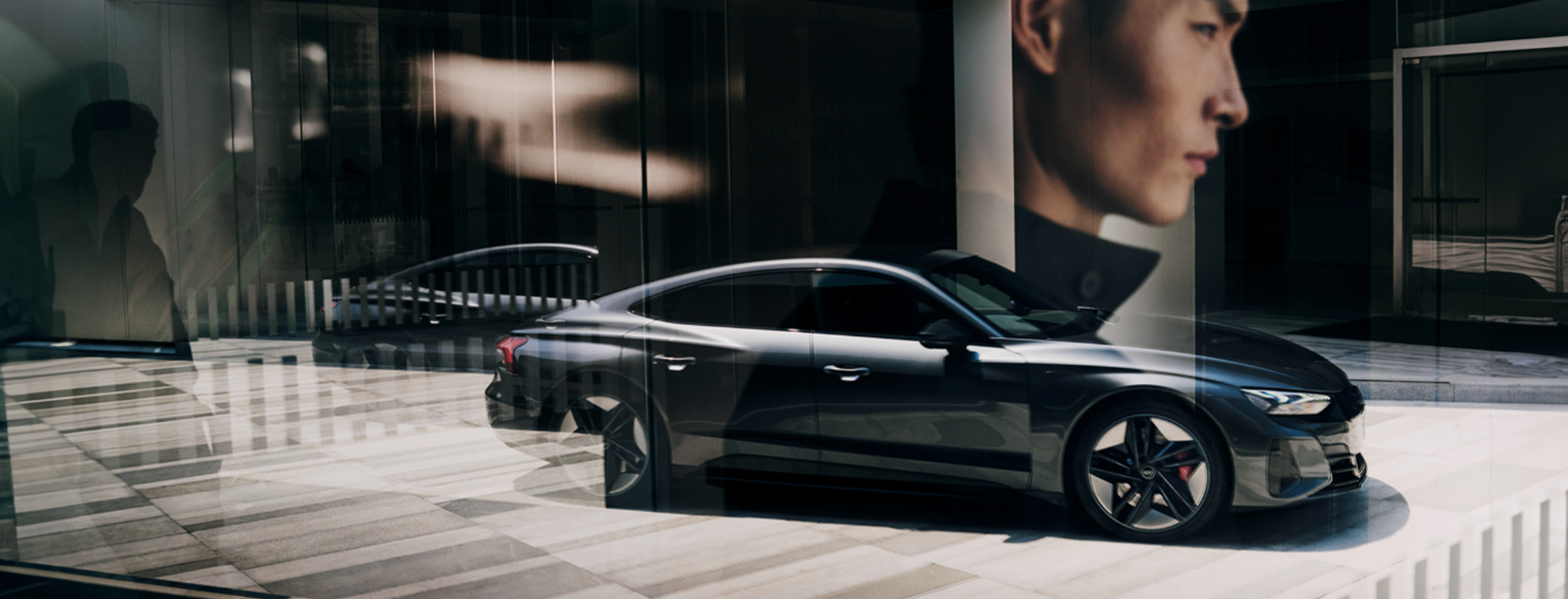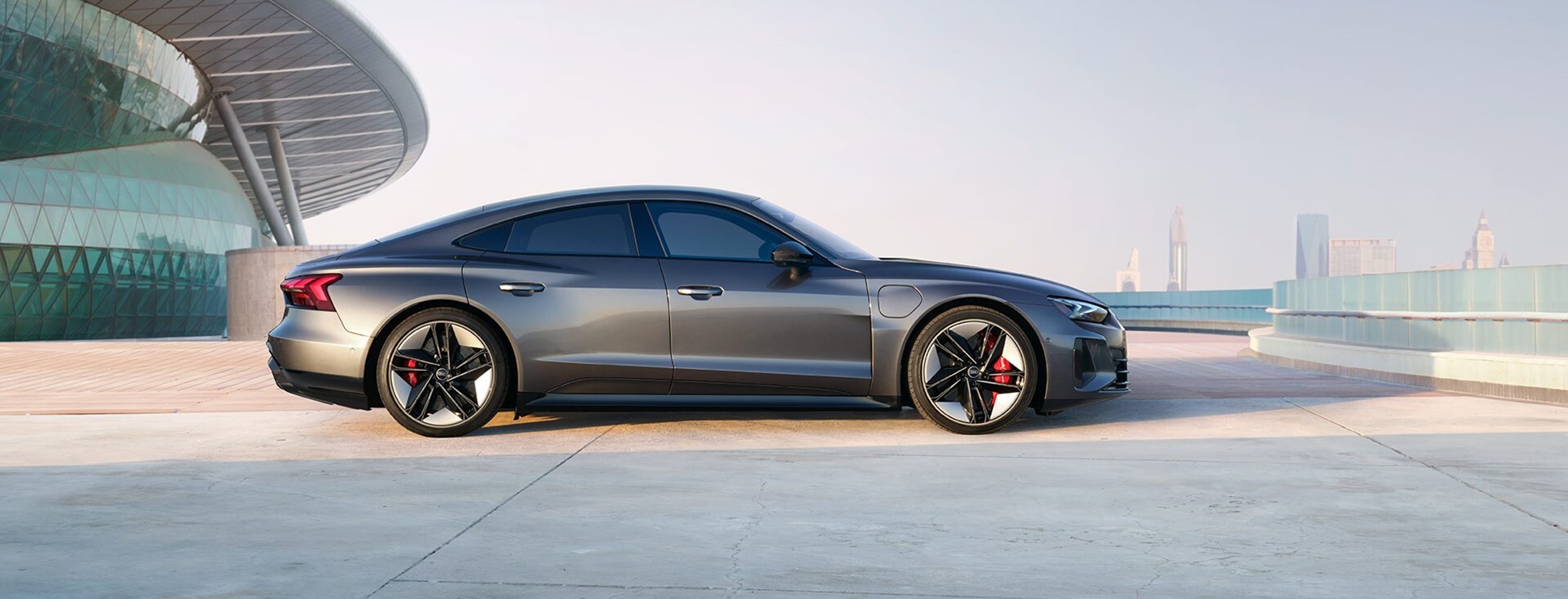

Audi e-tron GT
Model Range
A new generation Gran Turismo: performance, practicality and sustainability
The highly anticipated Audi e-tron GT has arrived on Kiwi shores, promising to demonstrate how exciting mobility can be. The high performance GT car combines Audi Sport performance with Battery Electric Vehicle technology for the first time – and promises a new realm of performance.

Audi e-tron GT quattro
Pure sportiness and progressive luxury
Audi has unveiled the production version of its e-tron GT – an Audi, the likes of which, the world has never seen. The four-door high-performance coupe is a demonstration of how fascinating and exciting electric mobility is – the start of a new era, the Gran Turismo of the future.

Focused on the aesthetics of dynamic handling
In the interior, the Audi e-tron GT quattro offers plenty of everyday usability paired with the highest quality.

Fast charging
Up to 270 kW at 800-volt charging stations – as standard. It takes approx. 5 minutes to charge enough power for the next 100 km. Around 22.5 minutes will take the battery charge from 5 % back up to approx. 80 %.

For an expanded sense of space
The panoramic glass sunroof with its continuous gloss black conveys a generous sense of space in the interior.

Expressive accents
Aerodynamically optimised shapes become functional details. From the intelligent air inlets at the front to the vented wheel arches and the striking rear diffuser.

Audi RS e-tron GT
Pure energy and progressive performance

RS in a new dimension
The power delivery that the Audi RS e-tron GT offers with its fully electric quattro all-wheel drive is impressive. With an electric drive on both the front and rear axles, it can deliver up to 440 kW of power

Functional and attractive – the wheels
Optional aerodynamically optimised wheels round off the efficient and high-performance vehicle concept.

Fast charging
Up to 270 kW at 800-volt charging stations – as standard. It takes approx. 5 minutes to charge enough power for the next 100 km. Around 22.5 minutes will take the battery charge from 5 % back up to approx. 80 %.

Focused on aesthetic driving dynamics
In the Audi RS e-tron GT, everything is focused on the functional center of the interior: the driver’s position.
Register your interest

Enter your contact details below